| Name | Markham-Meyerding Hemilaminectomy Retractor |
| Lead Time | 0-3 days |
| Competitor | ;MF442R;NL5382;205255;205-255;501205;244590;24-4590;50-1205;2445-90;MF443R;NL5383;205256;205-256;501206;244591;24-4591;50-1206;2445-91;2445-90_2445-91; |
| Specialty | Neuro, Ortho & Spine-Retractors |
| Material Finish | Stainless Steel |
| Grade | Premium Operating Room |
| Units of Measurement | Each |
| Manufacturer | Nine H Surgical |
| Sterility | Non-Sterile |
| Usage | Reusable |
Lumbar Interbody Spreader
4″ (10.2 cm) arm length, maximum opening 2-3/4″ (7.0 cm) Markham Meyerding Hemilaminectomy Retractor is crafted for use in orthopedic neurosurgical procedures that require removal of half of the lamina. This type of procedure can be used to help in decompression of the spinal cord. The unique design of this instrument reflects its use in hemilaminectomy as only one side features a blade with a toothed edge. This instrument is available with the blade on the right arm on blade on left arm depending on which half of the vertebral arch is being removed.
SKU:
FI-01-1068
Category: Hooks & Retractors
Description
Reviews (0)
Be the first to review “Lumbar Interbody Spreader” Cancel reply
Shipping & Delivery
Related products
Adson Cerebellar Retractor
7-1/2" (19.0 cm), 22.0 mm deep Adson Cerebellar Retractor is a specialized instrument that is used in neurosurgical procedures. This tool can be used for retraction of the cerebellum, it is protected from damage by placement of cotton strips. There is a ratcheting mechanism that allows the ring handles to be locked at a certain width and held there. Additionally this retractor is available with either straight or angled arms and either sharp or blunt prongs makes this a highly versatile instrument that can satisfy any particular surgeon preference of patient need.
Adson Laminectomy Retractor
hinged arms, 4x5 blunt prongs, 1-1/8" (2.80 cm), 12-1/8" (31.0 cm)Adson Laminectomy Retractor is ideally suited for use in retraction of muscle and soft tissue layers during laminectomy procedures. This procedure removes the lamina, a portion of the vertebrae, and it is necessary to have full access to the vertebrae in question. This retractor features ring handles for ease in handling as well as hinged arms and blunt prongs that provide a gentle but secure hold on the tissue.
Beckmann Laminectomy Retractor
hinged arms, 4x4 sharp prongs, 17.0 mm deep, 12-1/8" (31.0 cm)Beckman Laminectomy Retractor is made for use in neurosurgical procedures of the spinal cord. Specifically this retractor can be used in laminectomy procedures in which the lamina of the vertebrate is removed. This retractor can be used to push aside the muscle and soft tissue layers that lie directly above the spinal cord. The ring handles and ratcheting mechanism make it easy to operate manually and to lock into the appropriate width. Additionally this retractor has sharp prongs and hinged arms to keep a firm grip on the tissue it is retracting.
Blount Retractor
10" (25.0 cm)Blount Retractor is a general-purpose retractor that can be used in orthopedic surgeries. It is designed with a very flat design allowing it to effectively retract and evenly distribute the pressure being applied while keeping itself out of the surgical field. Additionally it is made with either a single or a double prong making it a highly versatile instrument that can be satisfy a variety of patient needs and surgeon preferences.
Carbon Fiber Radiolucent Lateral Blade
ball snap closure, w/ teeth Carbon Fiber Radiolucent Lateral Blade is an added component to be used alongside the cervical retractor for general purpose soft tissue retraction. All six blades are made from stainless steel and a ball snap closure making them a tight fit. Each blade also features teeth giving them added hold in retraction. They are available in variety of sizes making it possible to find a suitable blade for soft tissue retraction in a number of neurosurgical scenarios and approaches to the spinal cord. Additionally this instrument is radiolucent which allows it to be left in place during x-ray and can be seen through.
Carbon Fiber Radiolucent Longitudinal Blade
ball snap closure, blunt Carbon Fiber Radiolucent Longitudinal Blade is an added component to be used alongside the cervical retractor for general purpose soft tissue retraction. All six blades are made from stainless steel and a ball snap closure making them a tight fit. Each blade also features a blunt edge preventing any excess tearing or trauma in retraction. They are available in variety of sizes making it possible to find a suitable blade for soft tissue retraction in a number of neurosurgical scenarios and approaches to the spinal cord. Additionally this instrument is radiolucent which allows it to be left in place during x-ray and can be seen through.
Caspar Type Counter-Retractor
Caspar Type Counter-Retractor is a specialized instrument made for retraction of soft tissue during neurosurgical procedures. This retractor is available as a frame with six different blades ranging from 35.0 mm to 60.0 mm in 5.0 mm increments. The variety of sizes of blades allows this retractor to be suitable for many different patients and surgeon preferences.
Cervical Retractor Medial Blade
stainless steel, ball snap closure, w/ teeth Cervical Retractor Medial Blade is an added component to be used alongside the cervical retractor for medial retraction. All five blades are made from stainless steel and a ball snap closure making them a tight fit. Each blade also features teeth that are variety in their size and curvature making it possible to find a suitable blade for soft tissue retraction in a number of neurosurgical scenarios and approaches to the spinal cord.


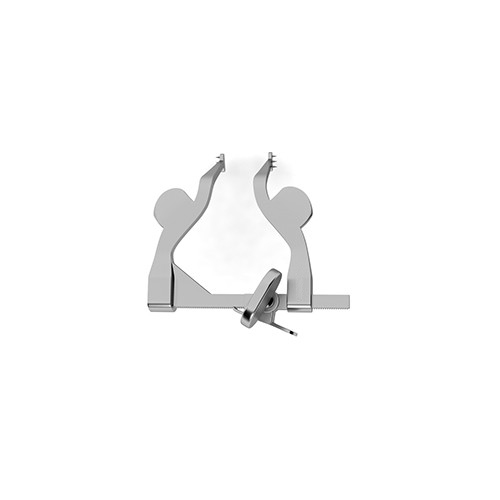
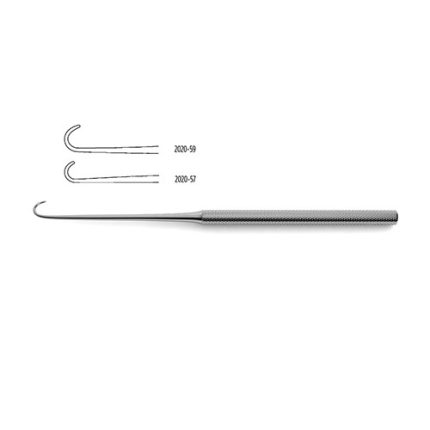
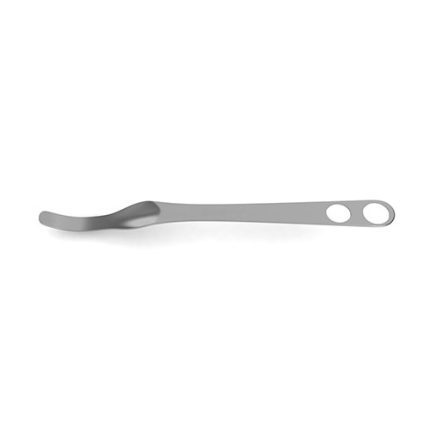
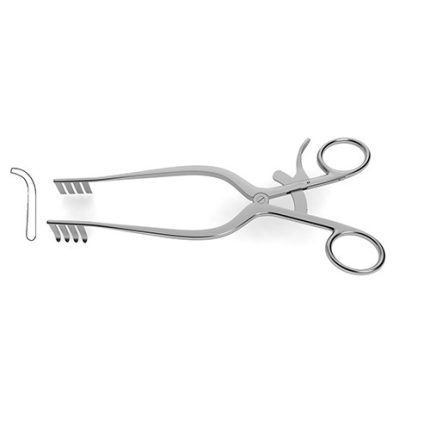
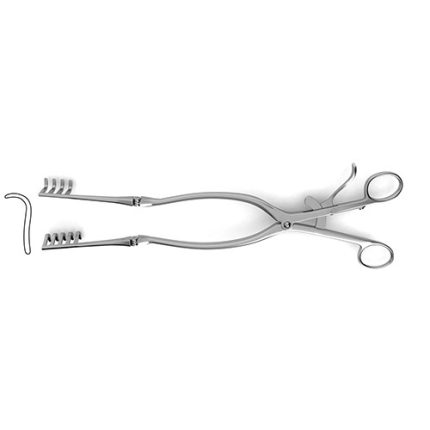
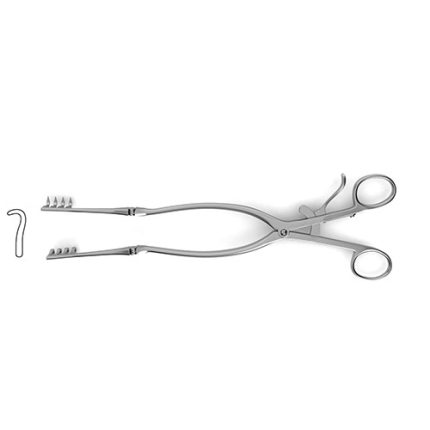

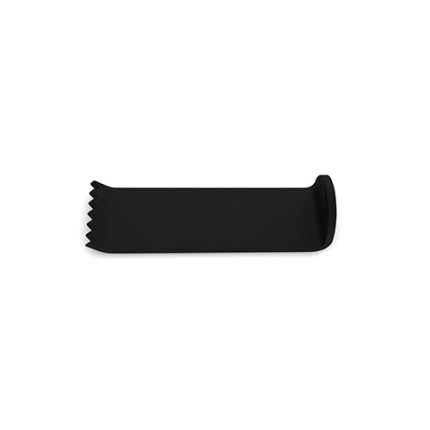

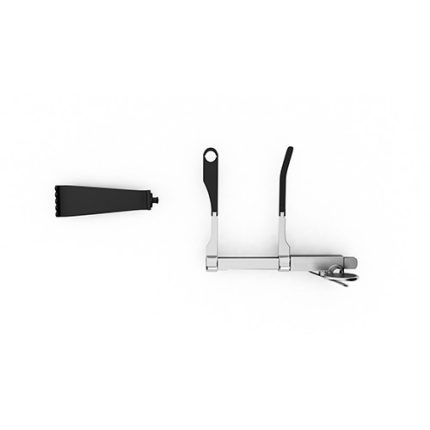

Reviews
There are no reviews yet.